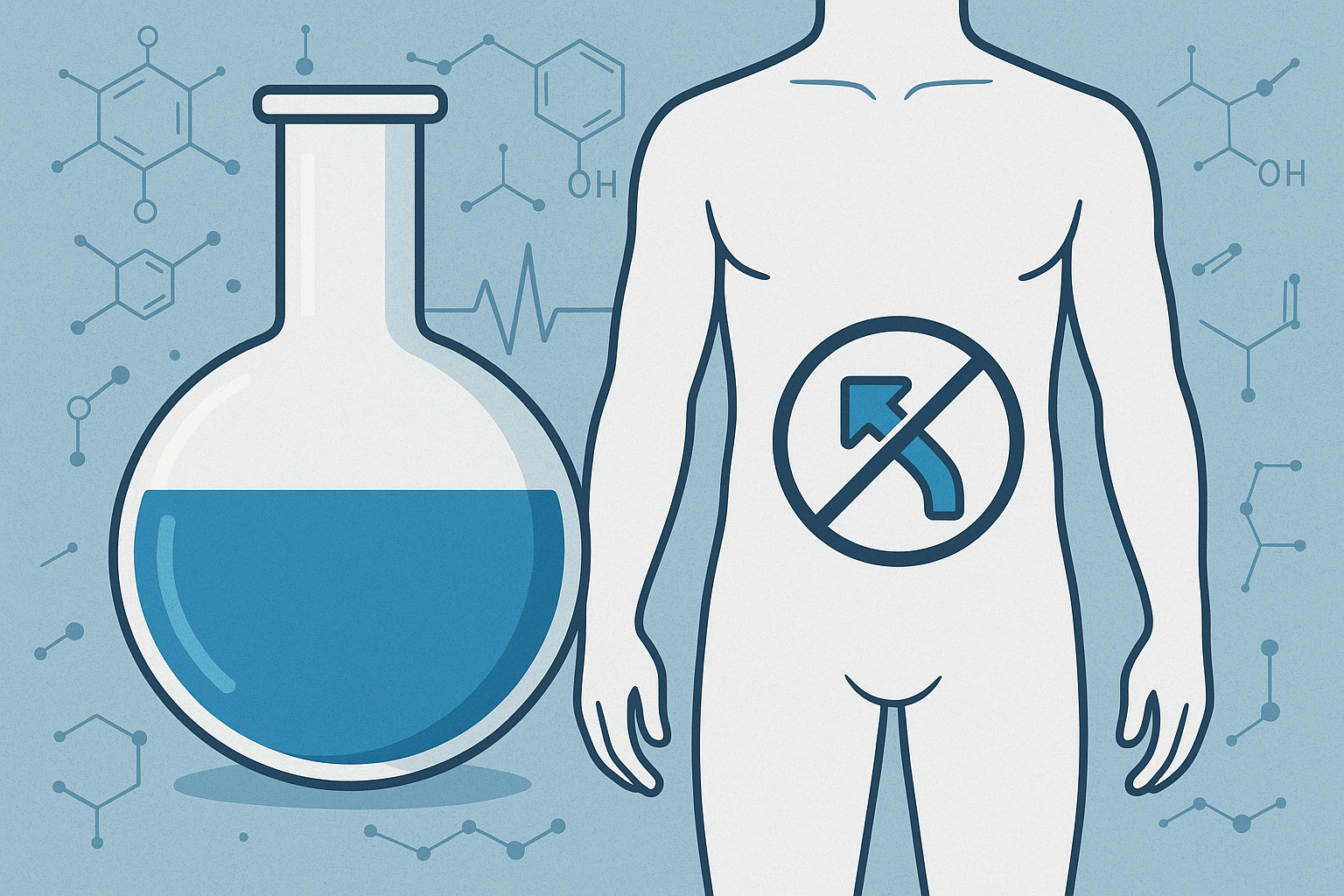Disclaimer
This article is for educational purposes only and should not be used as a substitute for medical advice, diagnosis, or treatment. Always consult a healthcare professional before using any medication or supplement for erectile dysfunction.
Erectile dysfunction (ED) affects a large portion of men worldwide, especially as they age or deal with metabolic and vascular disorders. While medications like sildenafil and tadalafil are well known, new interest has emerged around alternative and experimental treatments, one of which is methylene blue.
Methylene blue has been used in medicine for over a century, primarily as a dye and for conditions like methemoglobinemia, but recent studies and anecdotal reports suggest it may have broader benefits, possibly even for erectile dysfunction.
So, what does the science say? In this article, we’ll explore what methylene blue is, how it might work in ED, what current research reveals, and whether it’s a safe or viable option for men seeking better erectile health.
What Is Methylene Blue?
Methylene blue (chemical formula: C₁₆H₁₈ClN₃S) is a synthetic compound first developed in the late 1800s. It has been used as:
- A medical dye for staining tissues in biology and surgery
- A treatment for methemoglobinemia, a condition where blood can’t carry enough oxygen
- An antidote for certain drug or chemical poisonings
- An antimicrobial and mitochondrial enhancer in low doses
In recent years, researchers have begun examining its cellular and neuroprotective properties, including effects on mitochondrial energy production, oxidative stress, and nitric oxide pathways — all of which can play a role in sexual function.
How Erectile Function Works
To understand how methylene blue might influence erections, it’s important to revisit the biology of an erection.
An erection occurs when:
- Sexual stimulation triggers nitric oxide (NO) release in penile tissue.
- NO activates cyclic guanosine monophosphate (cGMP).
- cGMP relaxes smooth muscles in penile arteries, allowing blood to fill erectile chambers.
- Blood gets trapped, leading to an erection.
If there’s a problem with nitric oxide production, vascular health, or nerve signaling, the erection process is disrupted. That’s why conditions like diabetes, hypertension, and low testosterone often cause ED — they affect this delicate pathway.
The Role of Nitric Oxide and Mitochondria
Erectile function depends heavily on nitric oxide signaling and mitochondrial performance. Mitochondria — the energy factories in cells — produce ATP that supports muscle relaxation and nerve transmission.
When mitochondrial function declines due to age, oxidative stress, or chronic disease, nitric oxide synthesis also decreases. This leads to reduced blood vessel dilation and weaker erections.
Here’s where methylene blue may have potential benefits.
How Methylene Blue Might Affect Erectile Dysfunction
Methylene blue interacts with multiple biological systems that influence erection quality. Here are the main ways it might help — and the caveats.
1. Improves Mitochondrial Efficiency
At low doses, methylene blue can act as an electron carrier within the mitochondria.
- It helps bypass damaged parts of the electron transport chain.
- This increases ATP production, giving cells more energy.
Since erection is an energy-intensive process requiring strong smooth muscle control, enhanced mitochondrial performance could theoretically support better erectile response.
2. Reduces Oxidative Stress
Oxidative stress — an imbalance between free radicals and antioxidants — damages blood vessels and nerves involved in erections.
Methylene blue has antioxidant properties that may protect endothelial cells and nitric oxide availability.
3. Modulates Nitric Oxide Pathways
Interestingly, methylene blue can both inhibit and support nitric oxide pathways, depending on the dose.
- At high concentrations, it blocks nitric oxide synthase and guanylate cyclase, reducing NO signaling.
- At very low doses, it may stabilize nitric oxide and reduce excessive breakdown.
This dual behavior makes dosage extremely important — too much methylene blue could worsen erectile dysfunction rather than improve it.
4. Potential Neuroprotective Effects
Methylene blue has been studied for its role in neuroprotection — improving memory, alertness, and neurotransmission.
Since erections rely on brain-to-nerve communication, healthier neural pathways could indirectly support better sexual performance.
Research Evidence: What Do Studies Say?
As of now, no large-scale clinical trial has directly tested methylene blue as a treatment for erectile dysfunction. However, related findings offer clues.
1. Vascular and Endothelial Studies
Some early research explored methylene blue’s effects on blood vessel tone. It showed:
- Methylene blue can reduce excessive vasodilation in cases like septic shock by inhibiting nitric oxide.
- However, in healthy vessels, this inhibition might reduce penile blood flow, not increase it.
Hence, its use must be carefully dose-dependent and context-specific.
2. Animal Studies
Animal research on methylene blue and male reproductive health remains limited.
A few studies have investigated its oxidative stress-modulating effects in rat models, noting improvements in tissue resilience, but not specifically in erectile performance.
3. Mitochondrial Research
Studies in neurology and aging show that methylene blue can enhance mitochondrial function and increase energy metabolism in brain and muscle tissues.
Although not directly linked to ED, this mechanism suggests indirect benefits for men whose erectile problems stem from systemic fatigue or poor circulation.
4. Anecdotal and Experimental Use
Some biohackers and longevity researchers experiment with microdoses of methylene blue (typically 0.5–2 mg/kg body weight) for cognitive and energy enhancement.
Anecdotally, a few report better libido and energy levels, but such claims remain unverified and potentially unsafe without medical supervision.
Risks and Side Effects
While methylene blue has legitimate medical uses, it’s not risk-free.
Incorrect dosage or unsupervised use can cause serious side effects, especially when combined with other medications.
1. Serotonin Syndrome
Methylene blue is a monoamine oxidase inhibitor (MAOI).
When taken with SSRIs, SNRIs, or other antidepressants, it can trigger serotonin syndrome — a dangerous condition causing confusion, tremors, and high blood pressure.
2. Blood Pressure and Circulation Effects
Because it interferes with nitric oxide signaling, methylene blue may increase blood pressure or cause vascular constriction, which could worsen ED in some cases.
3. Discoloration
It causes temporary blue urine or skin tinting, which is harmless but alarming if unexpected.
4. High-Dose Toxicity
Excessive methylene blue can damage red blood cells, trigger hemolytic anemia (especially in people with G6PD deficiency), and cause nausea or dizziness.
Comparison: Methylene Blue vs. Conventional ED Treatments
| Aspect | Methylene Blue | PDE5 Inhibitors (Viagra®, Cialis®) |
|---|---|---|
| Mechanism | Mitochondrial & nitric oxide modulation | Direct inhibition of PDE5 enzyme |
| Clinical Research | Limited or experimental | Extensive, well-established |
| Effect on NO | Dose-dependent (can inhibit) | Enhances NO effect |
| Onset | Unknown | 30–60 minutes |
| Approval | Not approved for ED | FDA-approved for ED |
| Risk | High if misused | Low to moderate (well studied) |
From this comparison, it’s clear that methylene blue is not yet a proven or reliable ED therapy. It may hold potential in the future, but current evidence doesn’t support it as a substitute for approved medications.
Who Should Avoid Methylene Blue
You should not use methylene blue for ED (or any off-label reason) if you:
- Take antidepressants, amphetamine-based stimulants, or opioids
- Have G6PD deficiency
- Are pregnant or breastfeeding
- Have chronic kidney or liver disease
- Have cardiovascular problems without medical clearance
Always consult a qualified doctor before considering methylene blue supplementation.
Natural and Safer Alternatives for Erectile Health
If you’re looking to improve erections naturally without untested compounds, try these evidence-based methods:
1. Exercise Regularly
Aerobic exercise (like brisk walking, jogging, or cycling) improves blood flow, lowers blood pressure, and supports vascular health — essential for stronger erections.
2. Focus on Nutrition
A diet rich in fruits, vegetables, omega-3s, and whole grains helps protect blood vessels and optimize testosterone.
3. Manage Stress and Sleep
Stress and fatigue suppress libido. Mindfulness, deep breathing, and adequate rest support healthy testosterone and erectile function.
4. Strengthen Pelvic Floor Muscles
Kegel exercises improve blood retention in the penis and reduce venous leakage.
5. Medical Checkups
Conditions like diabetes, hypertension, and low testosterone can cause or worsen ED. Managing these with your physician will improve results more than self-medicating.
Emerging Research Directions
Methylene blue’s role in sexual function may gain clarity in coming years. Current research trends include:
- Low-dose mitochondrial therapies for aging and fatigue
- Combined use with antioxidants like CoQ10 or L-carnitine
- Neurovascular studies exploring the brain-penis connection
Until more is known, methylene blue remains an experimental and potentially risky compound for ED.
Final Thoughts
While methylene blue shows intriguing effects on mitochondria and oxidative stress, no solid scientific evidence currently supports its use for erectile dysfunction.
In fact, inappropriately used, it may worsen the condition by interfering with nitric oxide — the very molecule essential for erections.
If you’re struggling with ED, it’s best to consult a healthcare provider who can test for underlying causes and recommend proven treatments. For now, methylene blue should be viewed as an interesting but unproven supplement, not a remedy.

